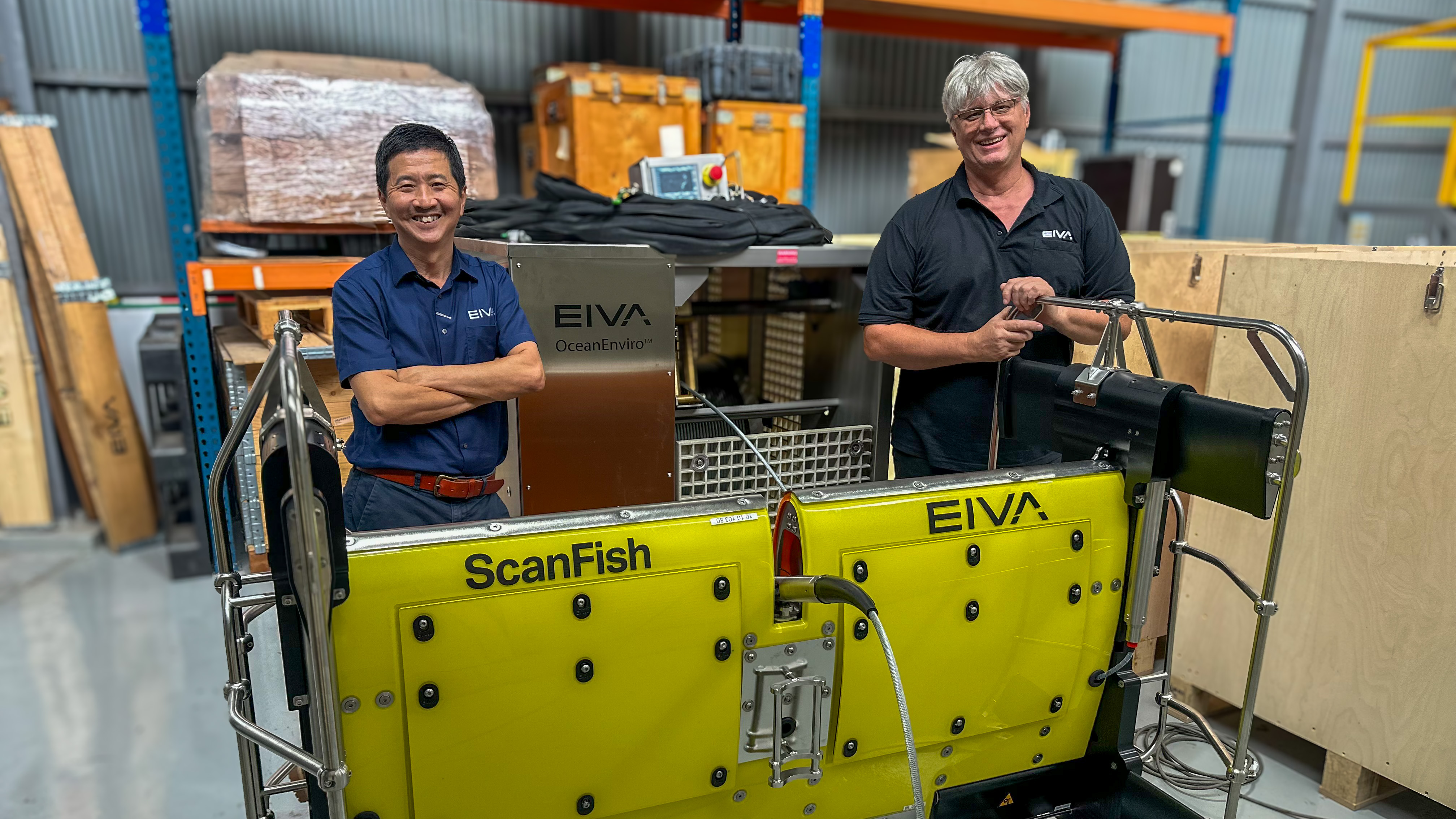Equinox
- Supplier:
- EIVA
- Product no :
- 10000128
Key features

Cutting a long survey story short: What you get
Diving further into the details of how Equinox will improve your UXO (unexploded ordnance) surveys, MCM (mine-countermeasures) and hydrographic operations.
Cutting a long survey story short: What you get
Diving further into the details of how Equinox will improve your UXO (unexploded ordnance) surveys, MCM (mine-countermeasures) and hydrographic operations

Keep sensors at the sweet spot
… with the robust, stable ScanFish ROTV platform’s 3D steering capability keeping your ROTV at a fixed height from the seafloor – this trusted ROTV is used for UXO surveys around the world
Easy mobilisation and maintenance
… thanks to a total weight of 220 kg in air. This solution uses proven components that can be easily maintained.
Training opportunities
… through existing training programmes EIVA provides for the community of existing users, such as ScanFish operator courses

Afford stunningly accurate visualisations
… since unlike towed Synthetic Aperture Sonar (SAS) systems, Equinox offers an affordable lower-logistics alternative still capable of providing high area coverage rates
Accurate geo-referencing
… by combining leading navigation and positioning using Sonardyne’s Mini-Ranger 2 USBL and SPRINT INS, imaging data is geo-referenced with an accuracy that’s unrivalled for these types of applications at this price
Easy survey planning
… by using NaviSuite Kuda software to define your sailing route and runlines – which is as simple as selecting the area you would like to survey

Review data while it is being gathered (so it can be used in the next stage of the survey)
… by monitoring NaviSuite Kuda’s real-time data displays during operations – the software continuously updates the vessel and ScanFish 3D position data, as well as processing and visualising Solstice data
Visualise and analyse data
… with real-time geo-rectified waterfalls, mosaics and DTM maps – as well as user interface tools to mark and process objects, including automatic target recognition (ATR) using AI
Significant payload capacity
… with the large capacity of the ScanFish ROTV, as well as room in the fibre cable to include additional payload sensors such as gap fillers


Components and optional extras
ScanFish ROTV platform integrated with industry-leading commercial off-the-shelf components.
Components and optional extras of the Equinox system solution
This integrated total solution leverages industry-leading commercial off-the-shelf components listed below...
EIVA ScanFish Rocio 3D multi-purpose ROTV system
with the ScanFish fibre-optic option, ScanFish Flight control software, NaviSuite Kuda Pro + Processing – Annual subscription, NaviSuite & Solstice PC and Equinox brackets for ScanFishSolstice multi-aperture sonar
with Equinox sonar pod for ScanFishMini-Ranger 2 with WSM 6+ and charger
Trimble precision heading GPS equipment
incl optional extrasMini-Ranger 2 & SPRINT PC
SPRINT 500 INS
Nortek DVL1000
Valeport MiniSVS
Fiber box for termination
Extra subsea MUX for ScanFish
incl cablesOceanEnviro 8.6 winch
Winch cable, fiber/electrical
750 mTow cable
Choose from a variety of faired cable options to further reduce drag of your ROTV systemOptional extras – according to daily rates
ScanFish & NaviSuite mobilisation support & onsite training
Solstice mobilisation support & onsite training

User-friendly control and monitoring software solution
All ScanFish models come with the ScanFish Flight software, which is an easy-to-use software system allowing for control and monitoring of the ROTV.
User-friendly control and monitoring software solution
All ScanFish models come with the ScanFish Flight software, which is an easy-to-use software system allowing for control and monitoring of the ROTV.

Controlling the ROTV's movements in ScanFish III Flight software
Only a minimum of training is required to prepare the crew to operate the ROTV, which means you will be ready to set sail within a short period of time. Moreover, there is no risk of wasting time on difficulties resulting from a complicated software user interface.
Via the intuitive interface of ScanFish Flight, you are in complete control of the position of the ROTV by defining its height compared to the seabed. At the same time, you can monitor its position in the water, and an alert panel will warn you of any irregularities.

ScanFish III Flight in action
On-site calibration
A pre-flight feature allows for testing and calibration of the ScanFish ROTV on-site prior to deployment, promising you the highest possible performance and data quality.
Recording of flight data
Acquired ROTV data can be analysed by means of a flight recording feature. It enables you to play back all flights and, for example, quickly locate the cause of any irregularities, thus enhancing the quality of your results and saving survey time.
Automatic control of winch
ScanFish Flight can be set up to control the winch towing the ScanFish ROTV, thereby ensuring an optimal cable length adjusted to the movements of the ROTV. This is especially relevant for the ScanFish Rocio models.

Robust product with a long service life
The practical design of the ScanFish models makes them so robust that they can be deployed in rough weather.
Robust product with a long service life
Quality materials and easily replaced wear parts characterise the ScanFish range and contribute to a high ROI through a long service life
The practical design of the ScanFish models makes them so robust that they can be deployed in rough weather. This saves time as the risk of downtime is vastly reduced. Two side plates with bars, which also function as handles, protect the body and facilitate handling, thus reducing the risks posed to the ROTV in the water and ensuring the safety of the crew during deployment and recovery.

Autonomy tools
Perform autonomous operations with tools to automate your survey every step of the way – from survey route planning to remote controlled, autopilot operations.
Features enabling autonomous operations
NaviSuite Kuda enables autonomous operations with tools to automate your survey every step of the way – from survey route planning to remote controlled, autopilot operations. Dive into how…
Automatic survey route planning tools
Ensure efficient coverage during surveys with tools for survey route planning. These intuitive tools help ensure your survey is performed optimally – through highly customisable and automated route planning.
Onboard automatic route planning during surveys
Conditions such as the weather can influence your coverage during a survey. In order to adapt to such factors, you can use the Coverage Assist tool, which plans runlines in real-time during the survey. Each time it creates a runline, it considers the previous surveyed line, as well as the optimal route for turning. This saves you time as it makes decisions onboard the vessel in real-time.

Autopilot route planning by defining a boundary
The vehicle route can be automatically created before a survey, based on a boundary. If your vessel has an NMEA autopilot, you can export route plans from NaviSuite to the onboard piloting system.
You can design the lawn mower type pattern depending on the desired spacing and orientation. You can also create an exclusion zone within the boundary.

Autopilot total solution for safe and optimised surveys
To ensure centimetre precision line-keeping and safer operations, you can equip your vessel with the NaviSuite Kuda – Autopilot. This autopilot enables extensive USV control in NaviSuite Kuda, for example precise line-keeping in sharp turns and a hold position capability, as well as allowing you to monitor your thrusters and easily switch between manual and automated steering.
In addition, this total solution provides many precise vehicle control features. Users can for example increase safety of autopilot operations – by defining emergency stop settings, as well as quickly taking manual control. Users can also improve the quality of data by adjusting the vehicle’s speed (while the survey is running on autopilot) if real-time collected data shows that the speed should be changed, for example decreasing the speed due to seeing holes in the real-time QC displays of collected data.

Remote control from anywhere in the world
NaviSuite software enables you to operate control systems from anywhere in the world.

Remote control even at low bandwidth
One of the challenges to remote control is low data bandwidth. With NaviSuite you can overcome this in several ways…
Live data compression
You can compress survey data in many ways to ensure uninterrupted signal. NaviSuite compression tools work on multi-beam echosounder, sidescan, laser and forward-looking sonar data.

The settings you can adjust include Along, which allows you to skip scans. As well as Across, which reduces the points across the scan, and analyses points with respect to depth change to then keep more points where there are areas of change.
Pre-plan autonomous underwater vehicle (AUV) operations
NaviSuite lets you remotely control an AUV without requiring constant connection. You can send small mission updates to your AUV, requiring only one good link moment to input your instructions – for example to go at a certain depth, pitch and heading. This capability means that no matter if the connection fails, the AUV will follow the directions you input in your latest mission update.

Avoid obstacles more smoothly than ever
This autopilot flight mode uses your vessel’s echo sounder data as an early warning system to avoid obstacles while keeping sensors stable.
Vessel-Aided Terrain Follow mode
Avoid obstacles more smoothly than ever through automated real-time calculations – this flight mode uses your vessel’s echo sounder data as an early warning system to avoid obstacles while keeping sensors stable.

Video showing the ScanFish Vessel-Aided Terrain Follow mode in action, making the ScanFish avoid steep obstacles on the seabed more smoothly than it would have if it were using only the ScanFish altimeter sensor for obstacle avoidance – thereby achieving stability for optimal sensor performance
The ScanFish Vessel-Aided Terrain Follow mode optimises your vertical runlines based on a DTM (online and/or pre-surveyed). The main advantages are…
It ensures smooth obstacle avoidance, so your data collection isn’t disturbed by any sudden movements of the ROTV, which could otherwise occur if there is a large, steep obstacle, such as a boulder. This is because the altimeter sensor onboard the ScanFish would register the obstacle when closer to it, causing the ScanFish to move quickly out of the way to avoid it. On the other hand, with the Vessel-Aided Terrain Follow mode, the ScanFish can react ahead of time thanks to an early warning from the DTM, and therefore you have the option to make it do avoid obstacles more smoothly over time.
You minimise risks to your ROTV by not only reliably predicting obstacles and avoiding them (as the ScanFish ROTV already does) but also customising how you avoid them, so your ScanFish ROTV’s vertical steering is tailored to your specific ROTV configuration (with this new mode, you can customise the area in which obstacles are avoided and the slope with which the ROTV avoids them.

The area highlighted in yellow is the corridor in which objects are considered relevant obstacles to be avoided using the Vessel-Aided Terrain Follow mode – and the two yellow spheres below the ScanFish model show the correction to the vertical route
Stay safe with a failsafe
This new steering mode is doubly designed to avoid any harm to your ScanFish. The EIVA team has equipped it with a failsafe function for the unlikely case of a malfunction in the setup causing your ScanFish to receive erroneous data from the synthetic altimeter calculated by NaviPac. An error in the synthetic altimeter can occur for example if you are using a pre-surveyed DTM which is outdated, as a new obstacle has appeared since then. In such a case, the priority will always be given to the minimum height registered by the ROTV altimeter mounted on your ScanFish.
Easy integration with your ScanFish ROTV
This automated steering mode is available for all ScanFish systems. In addition to your vessel and any model of ScanFish ROTV, this steering mode uses the following components…
- Multi-beam echo sounder on the vessel which is towing the ScanFish (optional as you can alternatively use pre-surveyed DTMs):
- Acquires seabed data to create a real-time DTM
- NaviSuite Kuda Pro, EIVA’s hydrographic survey software solution (alternatively, if using a pre-surveyed DTM, you can use NaviPac Pro or NaviPac Single User):
- Collects multi-beam echo sounder data and creates a DTM in real time – or displays a historical DTM
- Calculates your ROTV’s optimal vertical route based on the DTM and your settings for obstacle avoidance
- Inputs synthetic altimeter values to your ScanFish Flight software so you follow this route
- Multi-beam echo sounder on the vessel which is towing the ScanFish (optional as you can alternatively use pre-surveyed DTMs):

References
ScanFish Equinox provides high-resolution imaging with efficient coverage for customers around the world.
What do customers say about ScanFish Equinox?
Efficient coverage...
‘With Equinox, we saved a lot of time, for example by avoiding spending time on line infill, sonar mosaics and reruns. The high quality of the sensors meant that we spent less time processing data because we could rely on the positioning achieved by the combination of Mini-Ranger 2 USBL and SPRINT INS. It provided a level of quality far beyond using a conventional sidescan sonar with just USBL. Both we and our client are very happy with the data quality we delivered and the efficiency of the operation.
When acquiring data with sensors so close to the seabed, the survey lines become really tight. To avoid holes in-between survey lines, the runline planning software and precise horizontal control capability of Equinox was very useful.’
Thorbjørn Ekfeldt
Reach Subsea Project Manager
Learn more in the full case studyHigh-resolution imaging...
‘We chose Equinox because we knew that in order to achieve the resolution needed to identify small objects in the sinking path, the sensor would have to be kept close to the wreck and seabed around it. We therefore needed a highly controlled, high-resolution sensor solution to reduce the risk of a crash. A big benefit to our survey was that the stability of the Equinox platform was really good.
We imaged small objects, which we would never have been able to detect with a conventional sidescan sonar, thanks to Equinox’s high-resolution Solstice multi-aperture sonar. An added benefit of using Equinox is that, at the moment, we are interested in upgrading the sidescan sonar on our ROV systems, and from R&D perspective, it was good to test out the Solstice. We were very happy with this sensor – as there are some objects we can see in the collected data, which we would never have been able to detect with other sonars. Therese Sundberg, our senior geologist, has been target picking in the data and said that in her 20 years of experience, she has never seen such high-resolution sonar imaging data before.’
Thorbjørn Ekfeldt
Reach Subsea Project Manager
Learn more in the full case study‘Using Equinox, we were able to identify objects of a significantly smaller size than we have been able to previously. These findings include 25 wrecks which we will study further as we suspect they are much older than the ones previously found.
When the seabed terrain changes, the ScanFish automatically adapts to keep the same distance from the seabed – which a regular towfish can’t do. With this platform, we collected far higher quality data than we could have otherwise. The significance of the ROTV platform was even greater in deeper areas of the lakes. For example, the areas we surveyed at around 170 m depth were no problem to image clearly and locate wrecks.
Equinox is equipped with an excellent sidescan sonar – this was one of the things that drew us to it.’
Thor Olav Sperre
NORSJØ Project Manager
Learn more in the full case studyCurious to learn more? You can read the full case studies these quotes are picked from:
Specifications
- Operational depth rating
- 300 m
- Swath
- 200 m
- Bathymetry
- Yes
- Output formats
- .SWF8 and .XTF
- Target position accuracy
- Better than 1 m (DRMS)
- Pitch and roll stabilisation
- Auto
- Altitude following
- Auto (Fixed 7.5 metres from seafloor)
- Survey speeds
- 3-6 Knots
- Typical tether out
- Constant at 3-5 x depth (depending on the environment)
- Fibre telemetry
- 1 Gb/s
- Payload
- Other sensors can also be mounted
- Software
- NaviSuite Kuda Pro + Processing
- CAD/CAC
- NaviSuite Deep Learning
- Dimensions (length x width x height)
- 1210 x 1858 x 1049 mm
- Weight in air/water
- 220/73 kg


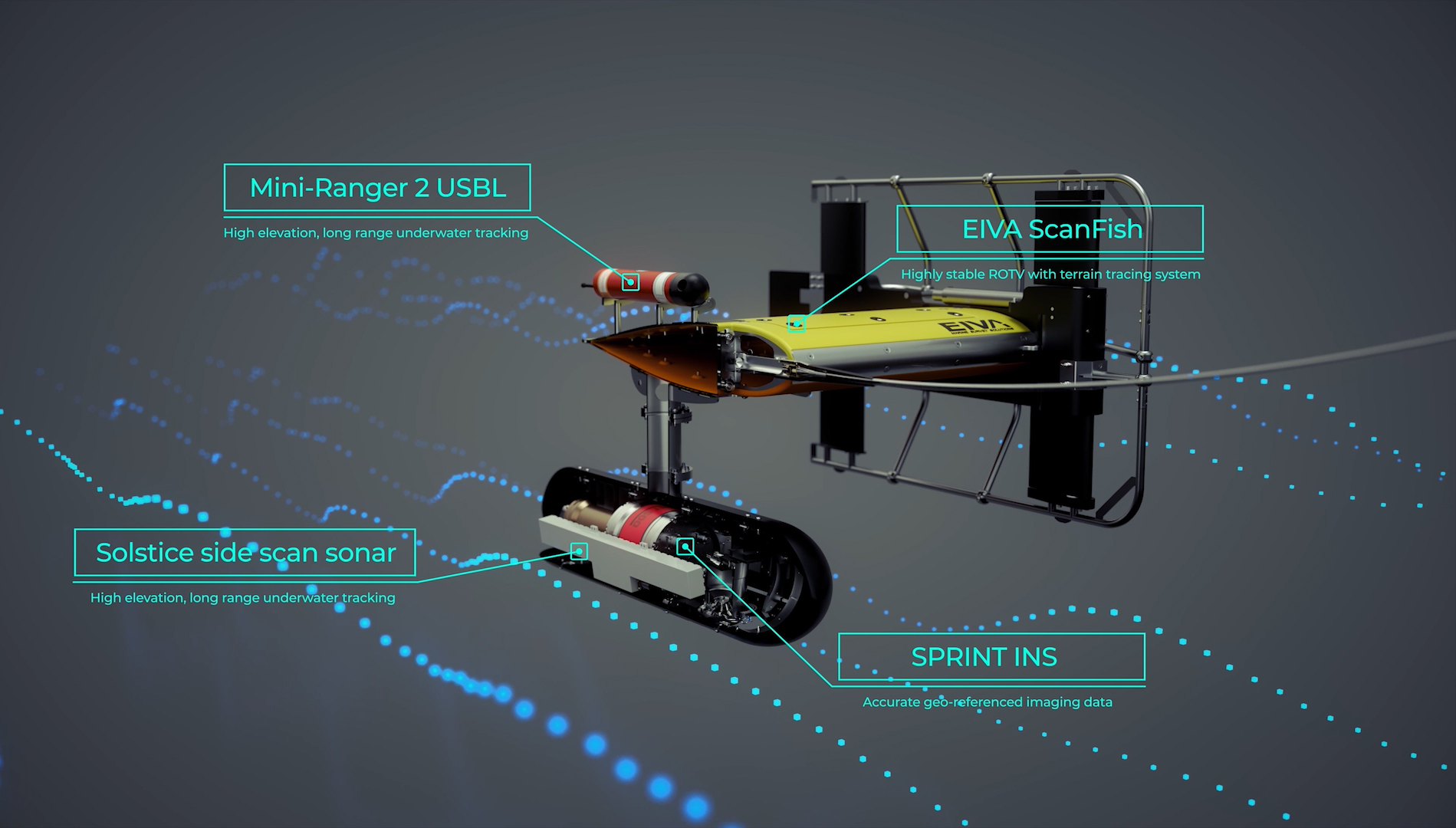

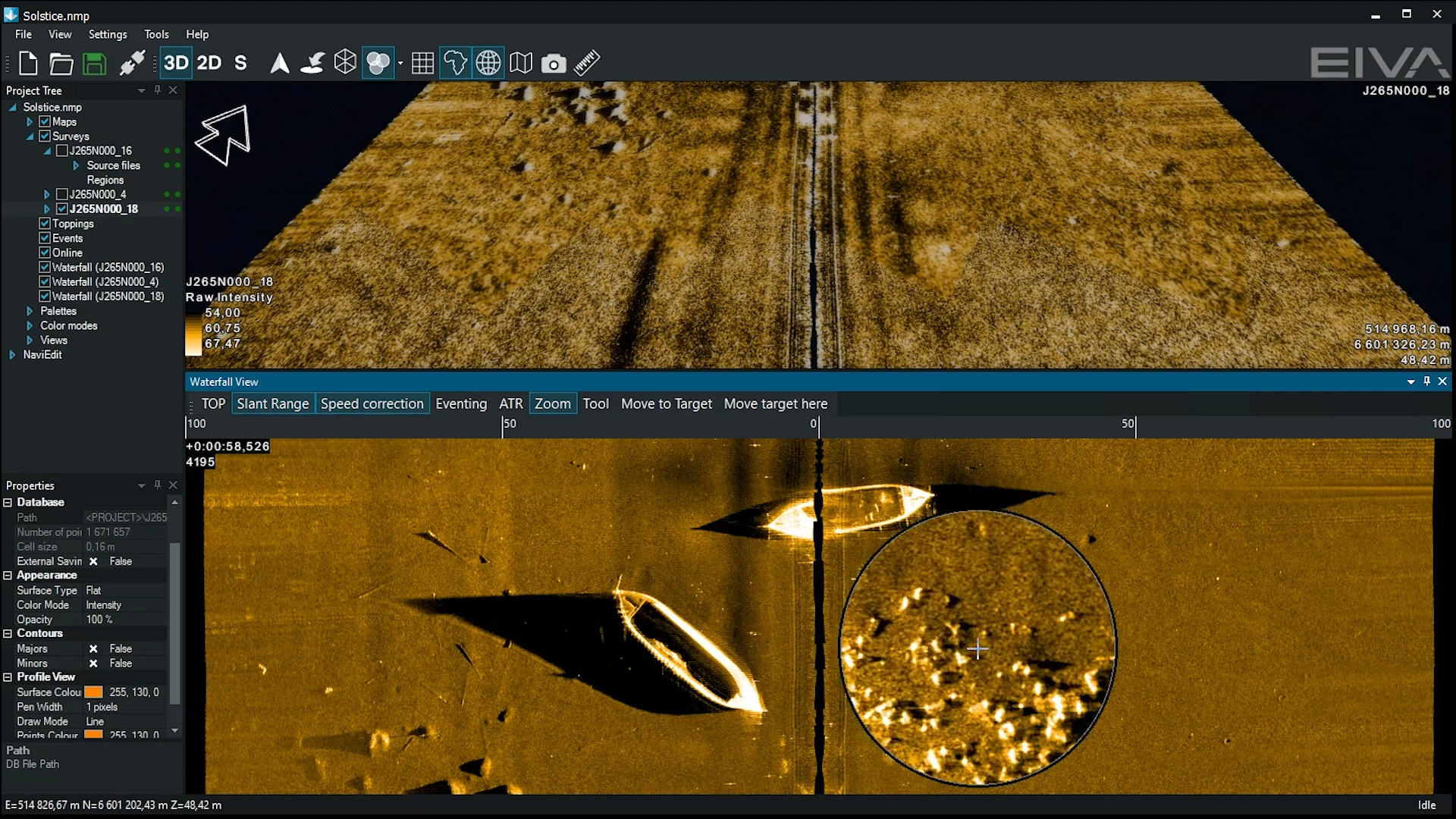
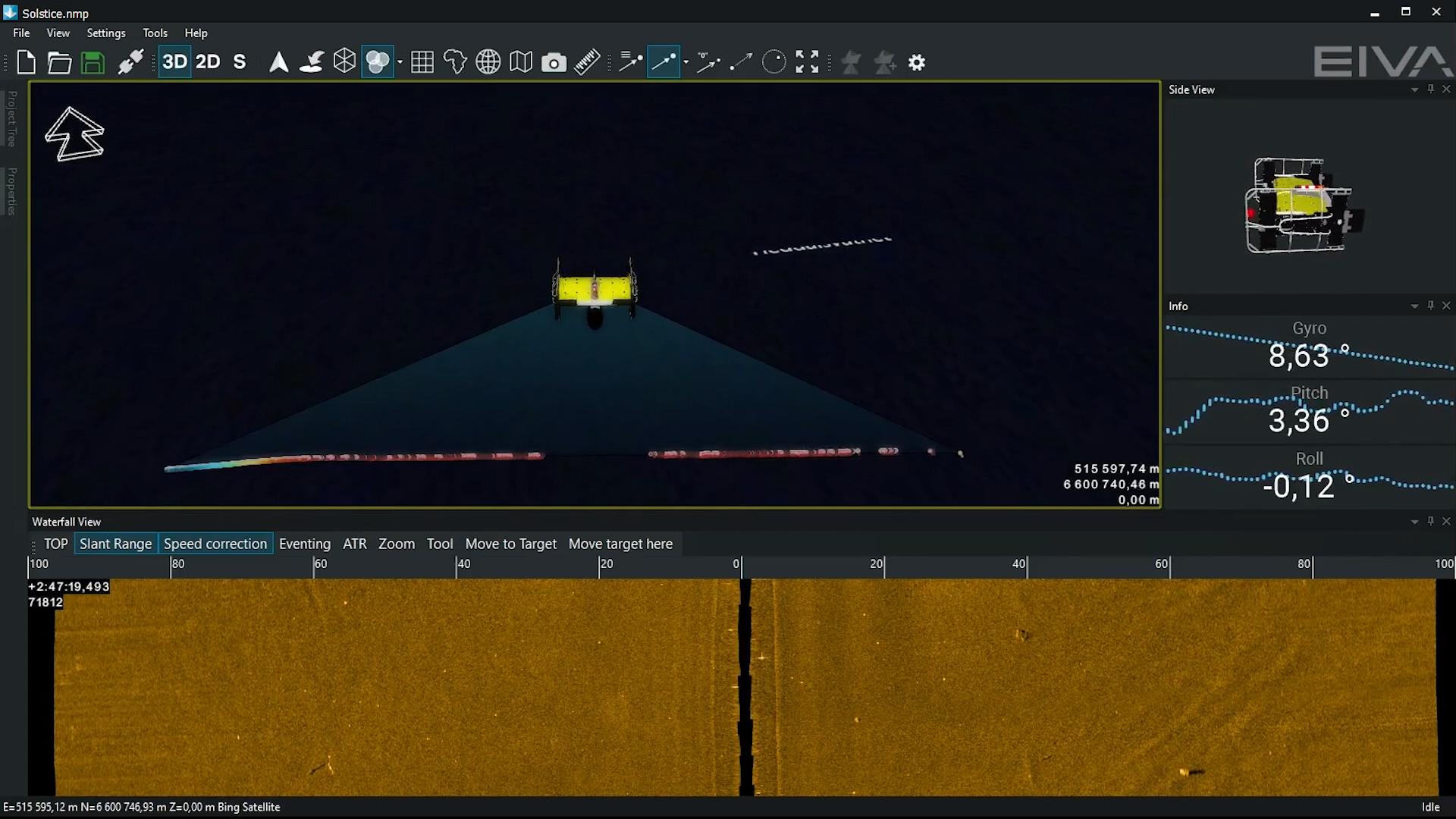





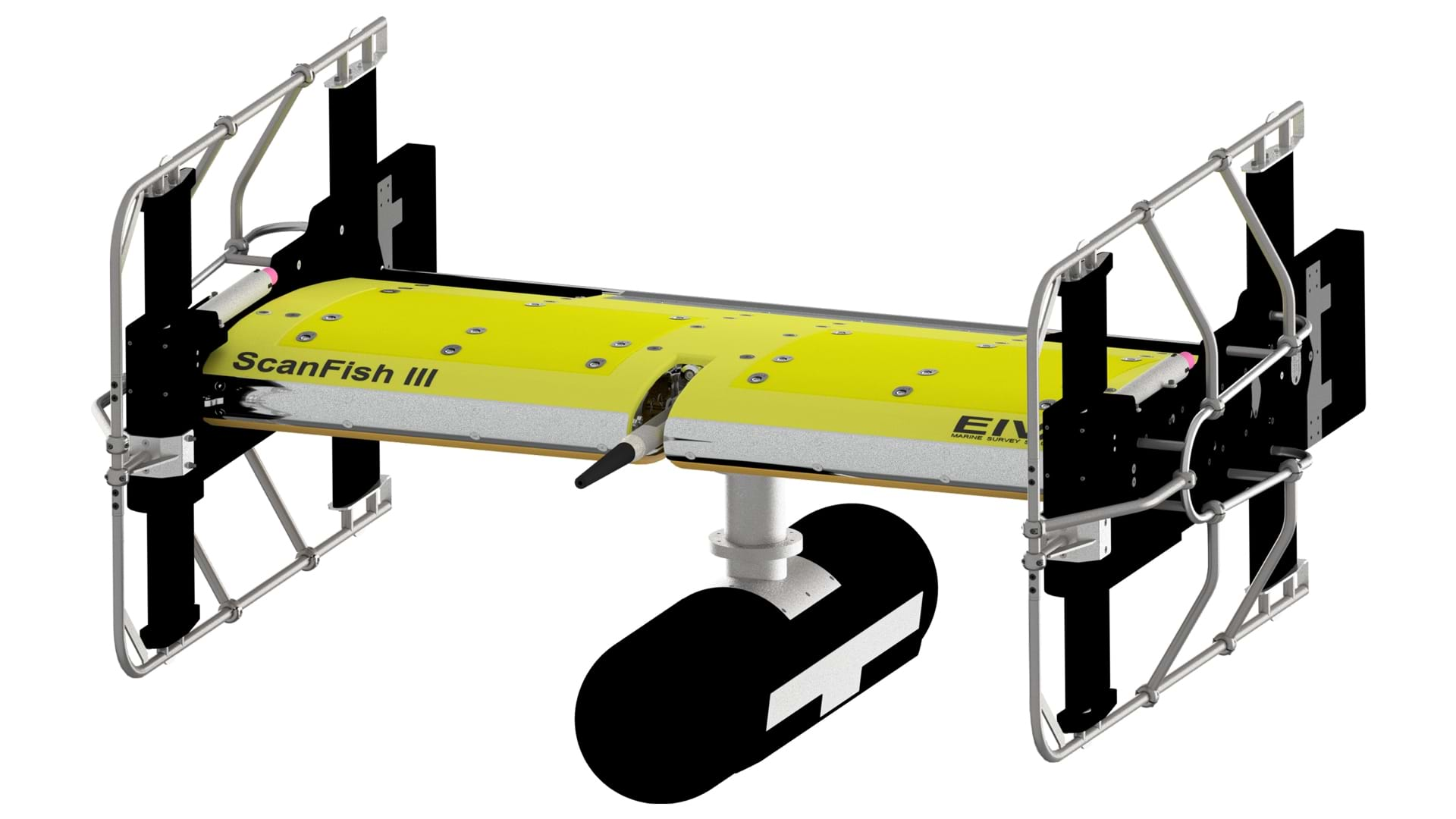
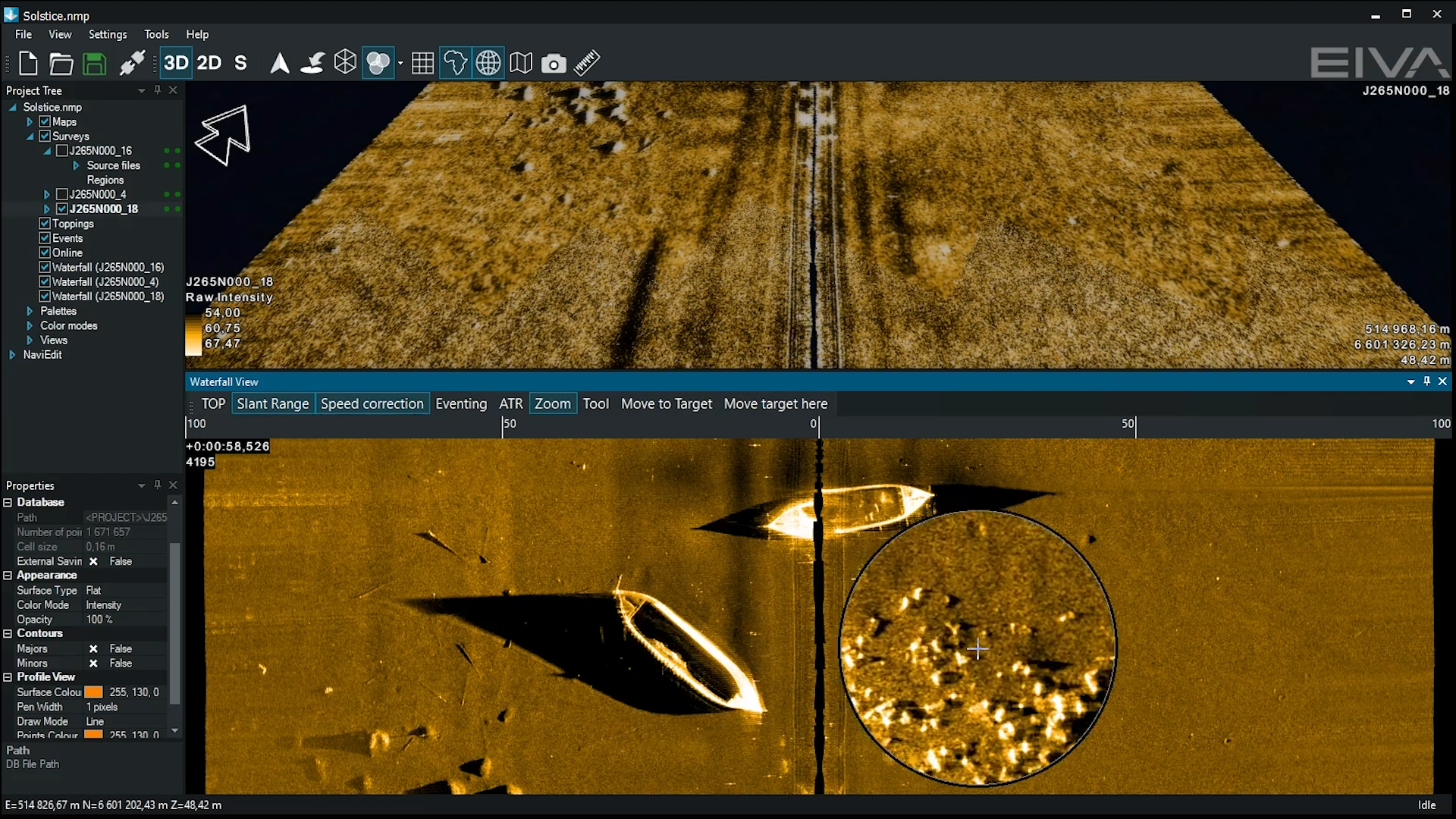


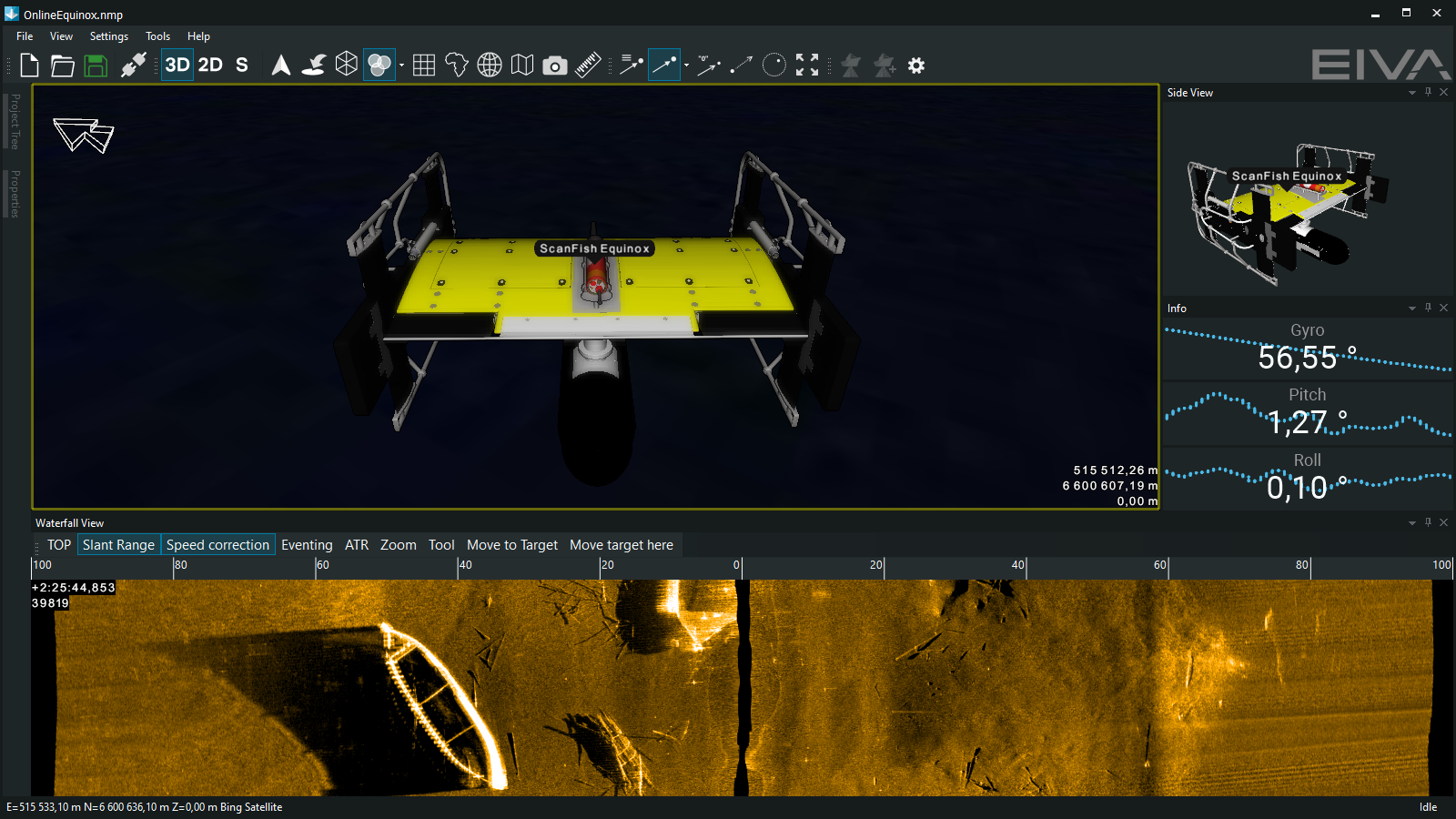






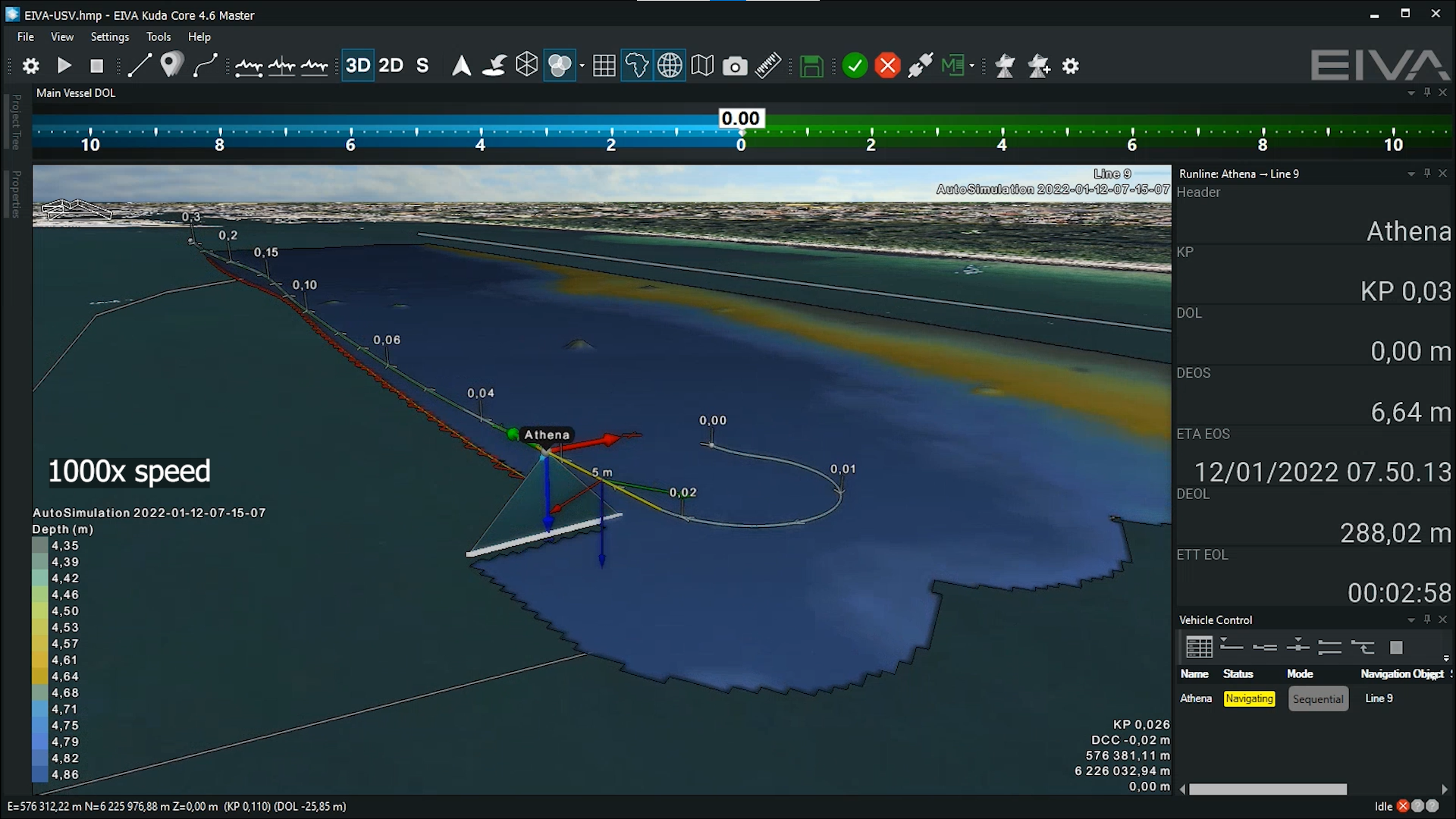
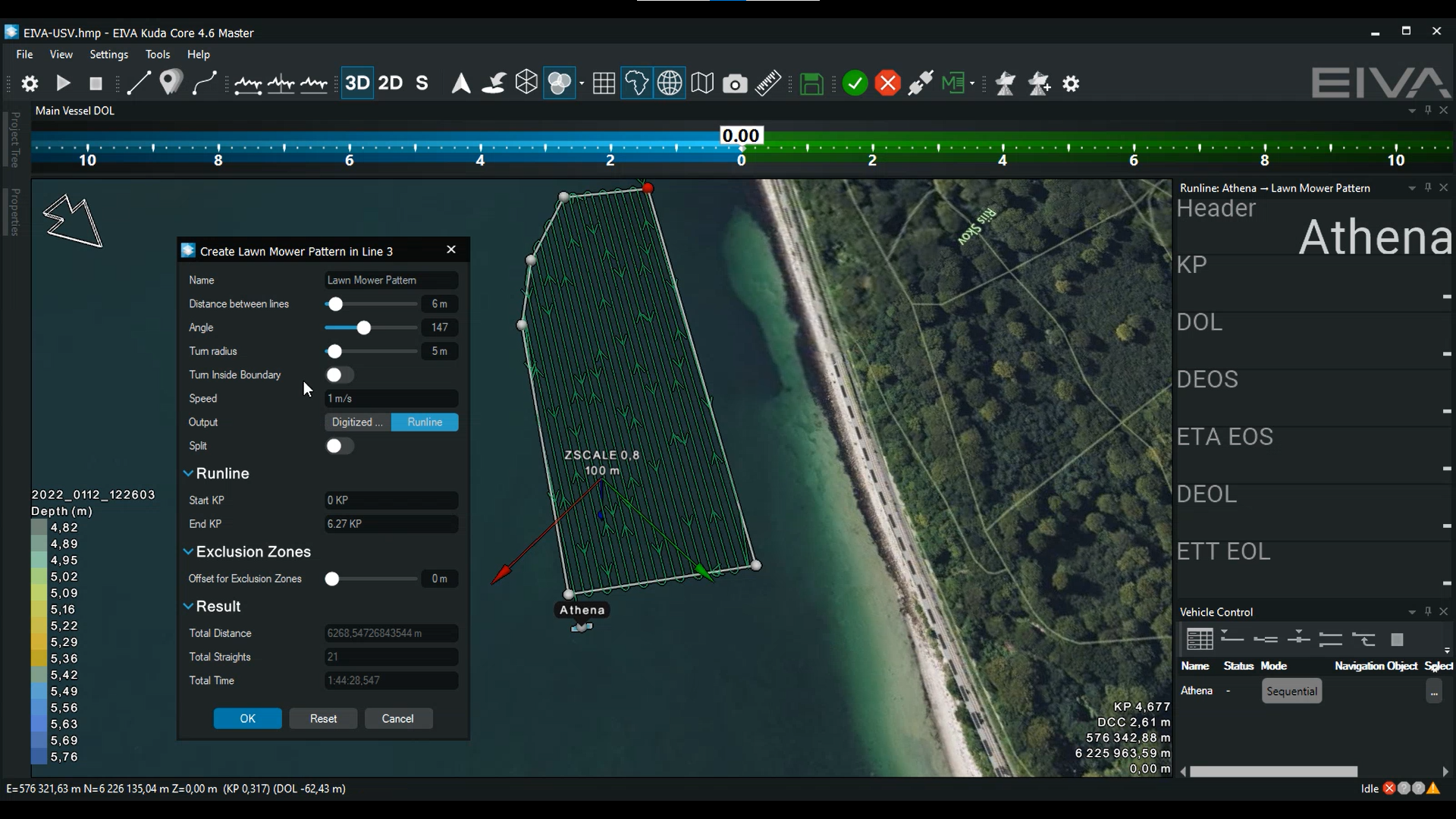

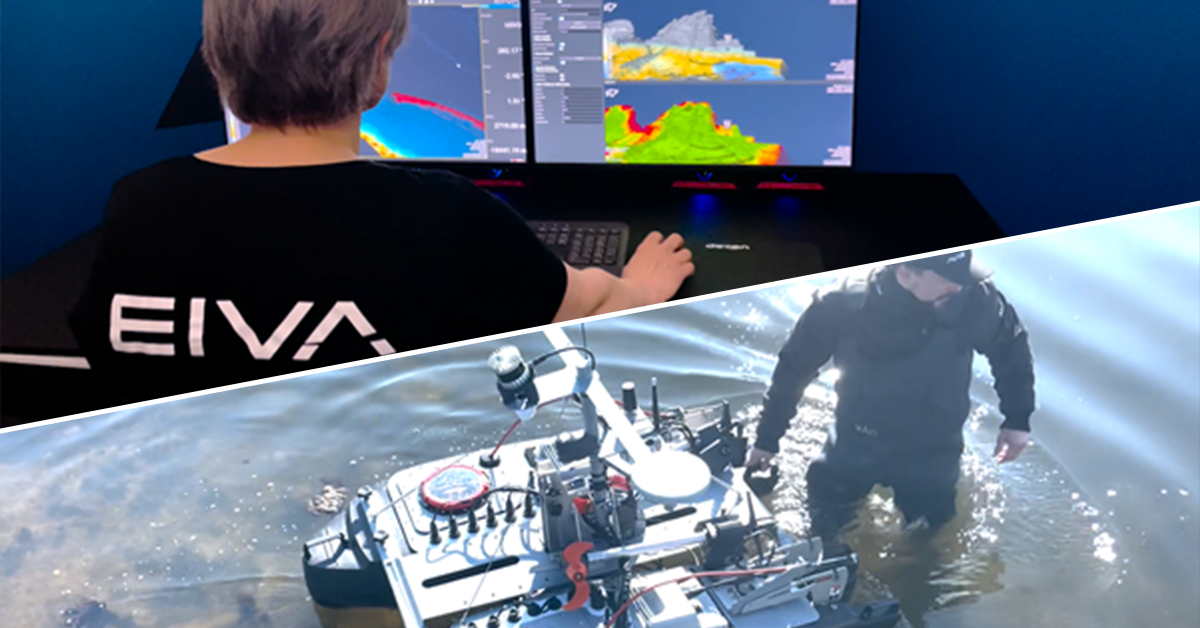
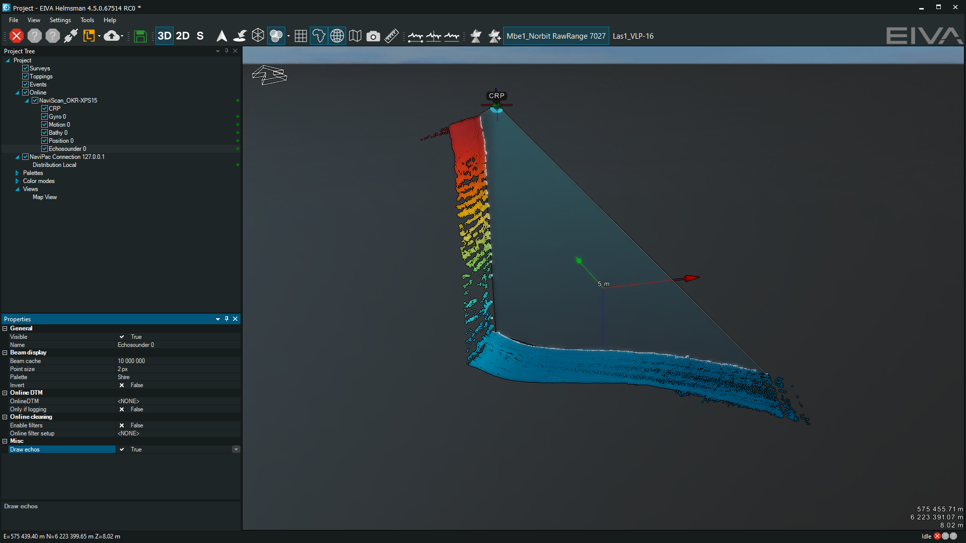

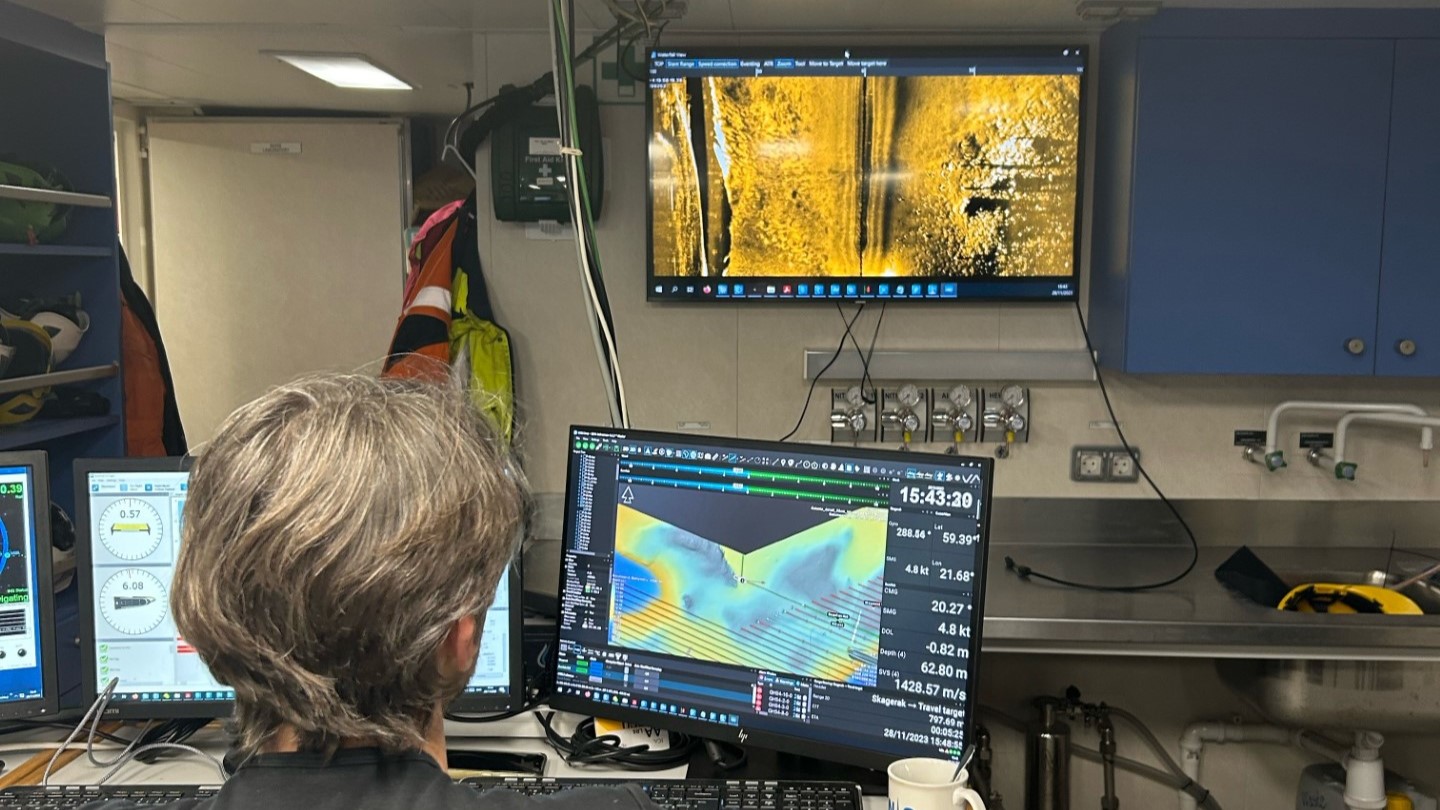
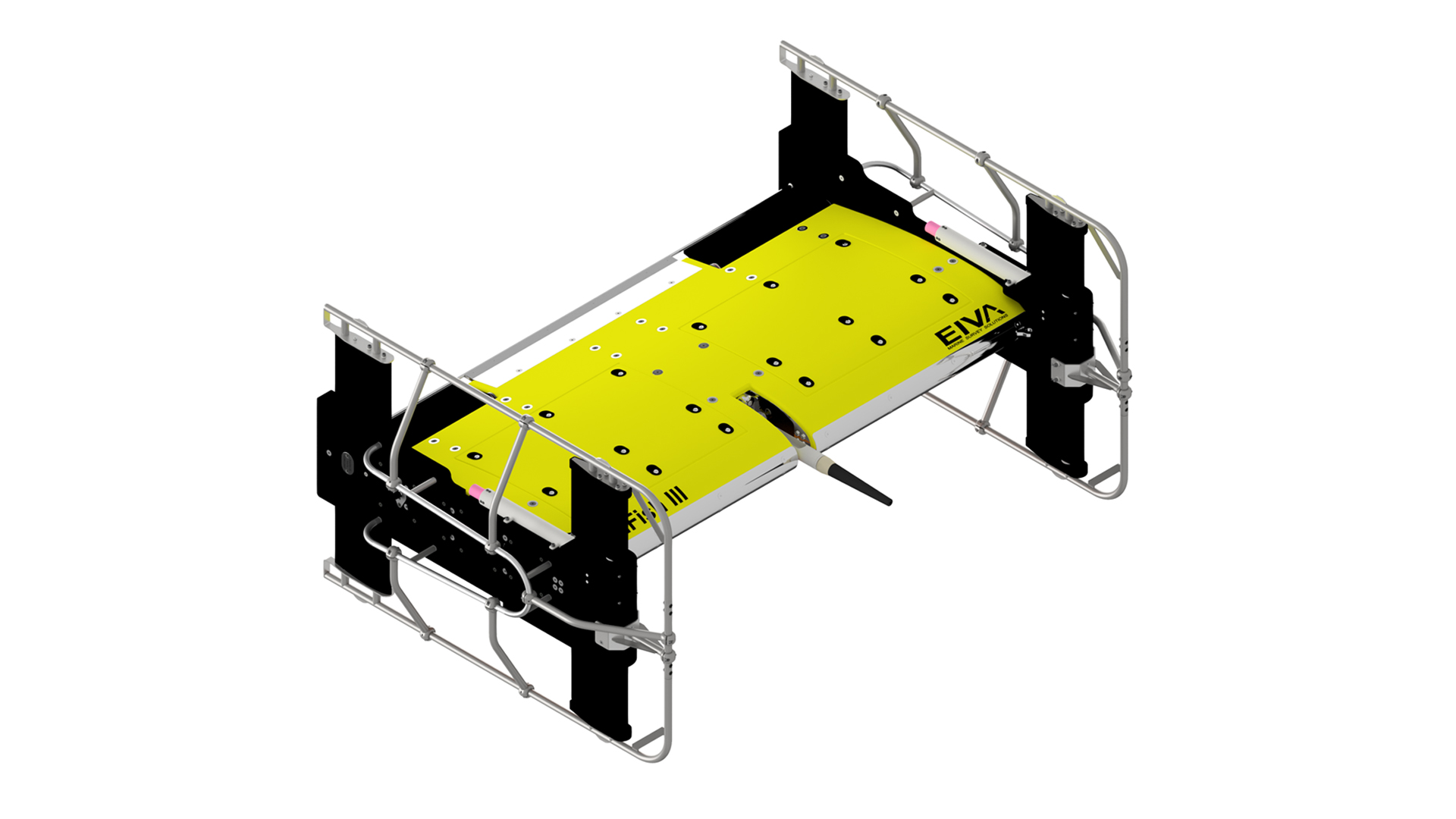


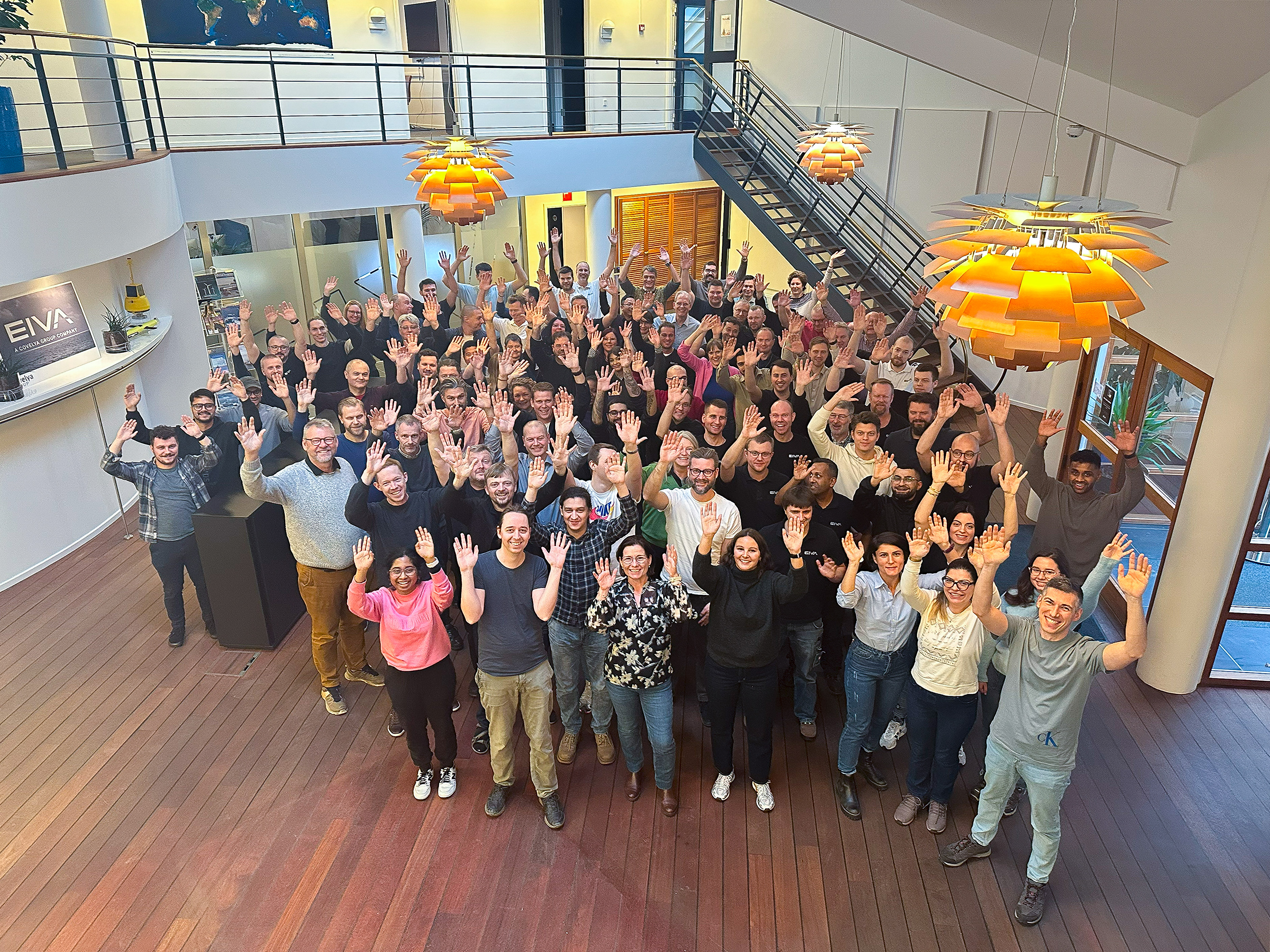
.png?mode=crop)
